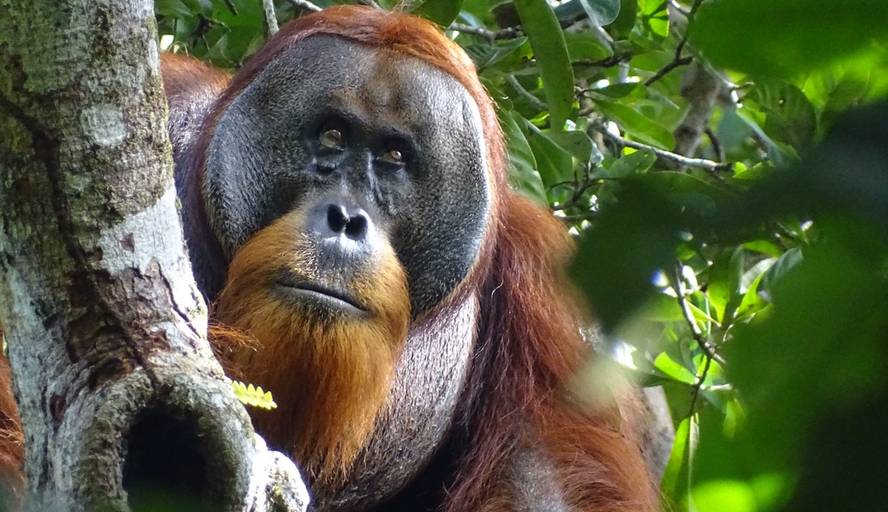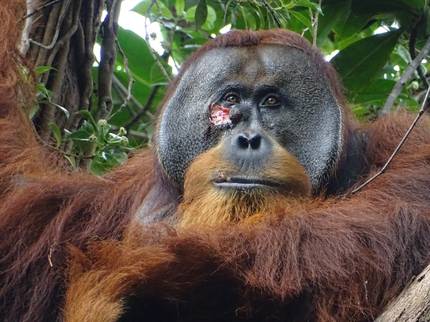Find an orangutan treating a wound with a plant

In June 2022, at Gunung Leuser National Park (Indonesia), researchers discovered that an orangutan known as Rakus had a large cheek wound. They think he struggled with other males. Three days later, they saw the Fibraurea tinctoria collection of leaves from the climbing plant, chewing and repeatedly applying the juice extracted from the wound and later covering with chewed leaves.
The analgesic and antipyretic properties of this plant are known and contain compounds such as the antibiotic, antifungal and anti-inflammatory effect, so it is ideal for wound healing.
In fact, the following days were able to check that there were no signs of infection and five days later the wound was closed.
In other animals, it has been seen that they use plants as medicines. For example, other large monkeys ingest certain plants to treat parasitic infections and rub the skin with plants to treat damaged muscles. And recently, the placement of chimpanzees in wounds has been observed. However, the effectiveness of these actions is not known. And this is the first time that a wound has been treated with a biologically active substance.
Researchers are convinced that this is intentional behavior. In fact, orangutans do not usually eat this plant and also worked for a long time. What they don't know is where and how they've learned that behavior. This is especially so because they have not been observed in other orangutans studied so far. As males in Orangutan are far from the place of birth, one option is for this behavior to be more common at the place of birth of Rakus.






